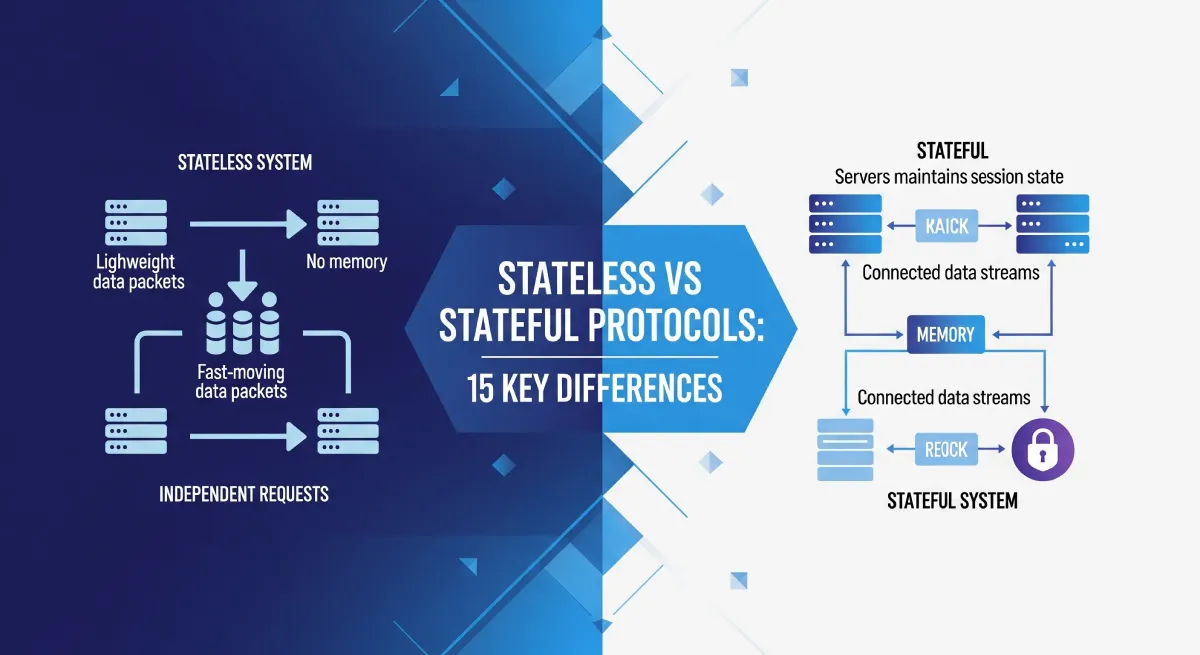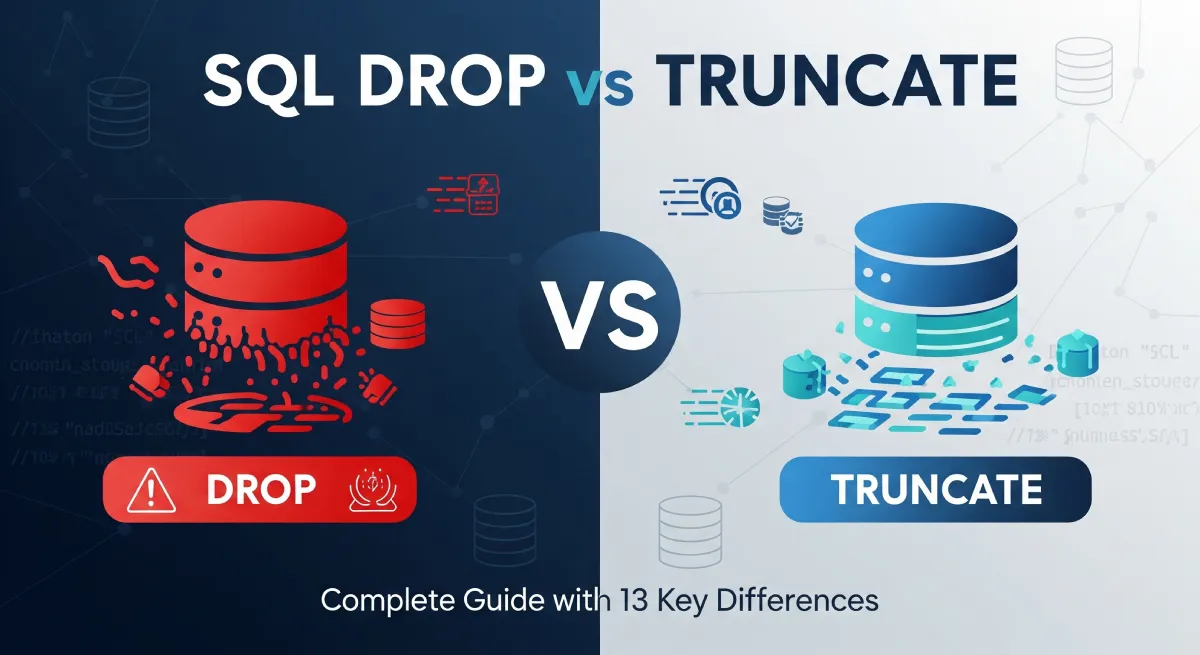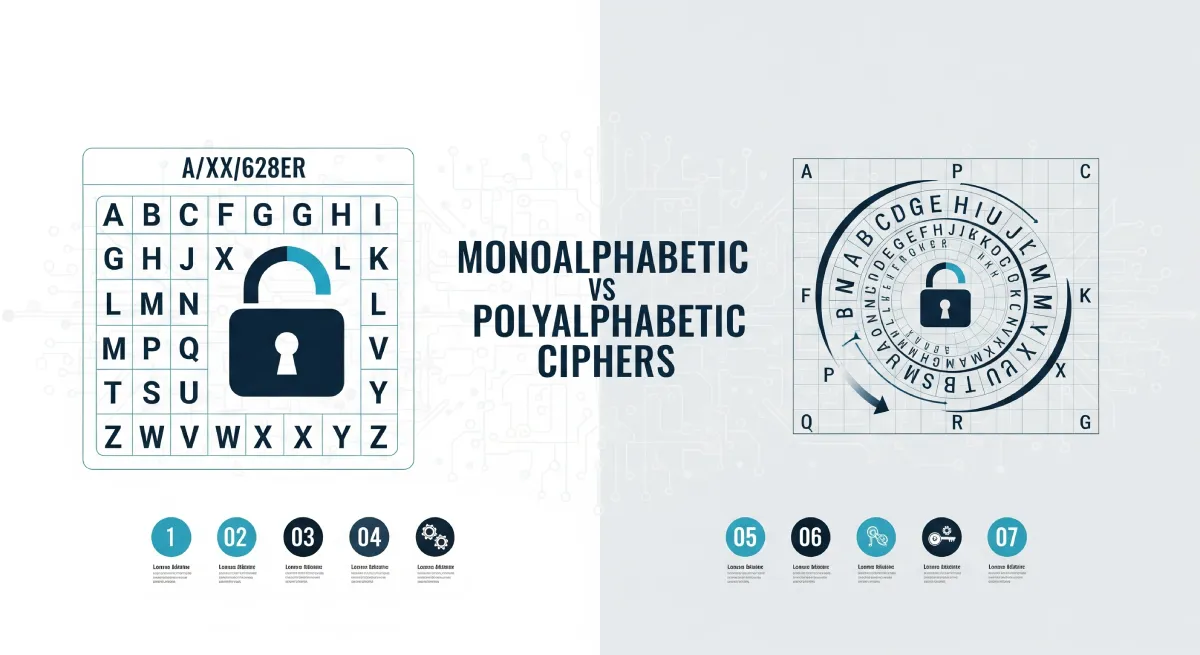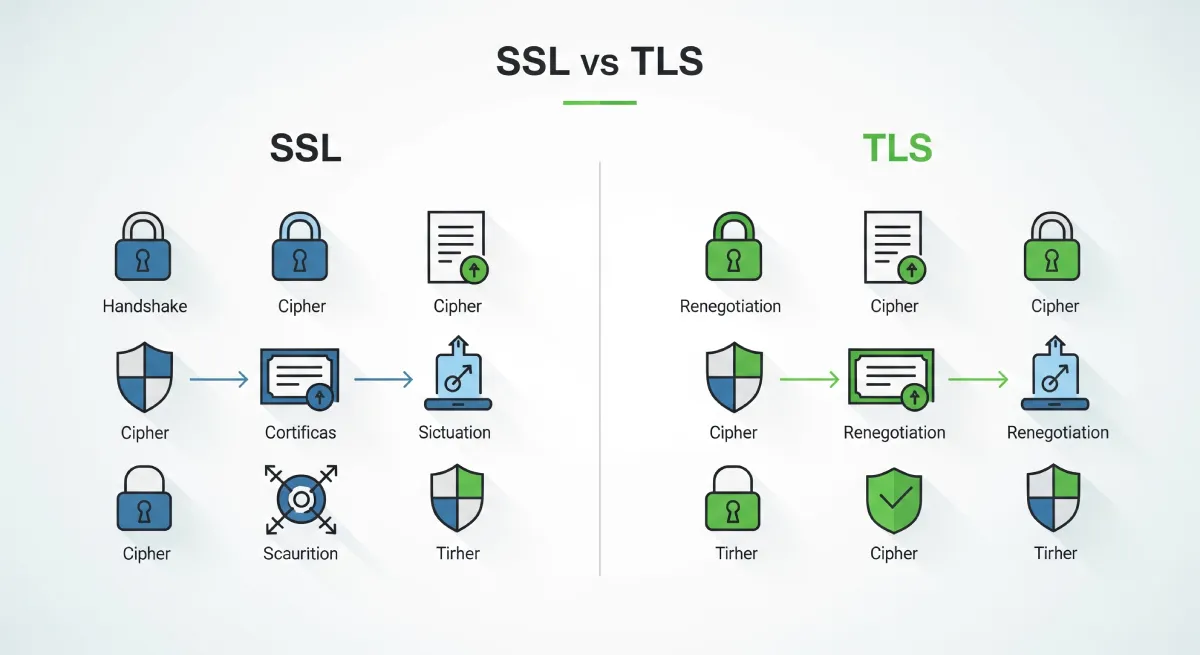Table of Contents
In networking, connection-oriented vs connection-less services determine how data is transmitted. Connection-oriented communication, like TCP, establishes a dedicated path for reliable data transfer, while connection-less communication, like UDP, sends data without a fixed connection. This guide explores their differences, advantages, and applications.
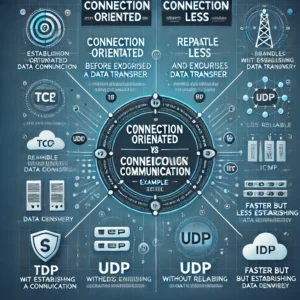
Connection-Oriented Communication
Connection-oriented communication requires establishing a connection between the sender and the receiver before transferring data. It ensures that data packets are delivered in order and without errors. This method relies on data acknowledgment and retransmission to guarantee successful transmission.
How Connection-Oriented Works
The process involves three main phases: connection establishment, data transfer, and connection termination. During the establishment phase, both parties agree on communication parameters. The data transfer phase ensures reliable delivery through acknowledgments and error checking. Finally, the connection is properly closed to free up resources.
Advantages of Connection-Oriented
- Reliable data delivery – Guarantees that all data reaches its destination
- Guaranteed packet sequence – Maintains the original order of data packets
- Error detection and correction – Automatically handles transmission errors
- Flow control – Prevents overwhelming the receiver with data
- Congestion control – Adapts to network conditions
Disadvantages of Connection-Oriented
- Overhead due to connection setup – Requires initial handshake process
- Less suitable for real-time applications – Higher latency due to reliability mechanisms
- Resource consumption – Maintains connection state information
- Complexity – More complex protocol implementation
Technical Characteristics
- Uses Virtual Circuit Switching – Creates a dedicated logical path
- Transmission Control Protocol (TCP) is a common example
- Stateful protocol – Maintains connection information
- Full-duplex communication – Data can flow in both directions simultaneously
Use Cases and Applications
Connection-oriented services are ideal for applications where data integrity and reliability are crucial, such as:
- File transfers and downloads
- Email communication
- Web browsing (HTTP/HTTPS)
- Database transactions
- Financial transactions
- Software updates
Connection-Less Communication
Connection-less communication does not require an established connection before transmitting data. Each packet is treated independently and sent to its destination without an acknowledgment process. This method is faster but does not guarantee the order of packet delivery.
How Connection-Less Works
In connection-less communication, each data packet contains complete addressing information and is routed independently through the network. There’s no prior setup phase, and packets can take different paths to reach their destination. The receiving end must handle any out-of-order delivery or missing packets.
Advantages of Connection-Less
- Lower overhead – No connection setup required
- Suitable for real-time applications – Minimal latency
- Efficient for short messages – No connection establishment delay
- Broadcast capability – Can send to multiple recipients simultaneously
- Simpler implementation – Less complex protocol design
Disadvantages of Connection-Less
- No guaranteed packet sequence – Packets may arrive out of order
- Possible packet loss – No automatic retransmission
- No flow control – Cannot prevent receiver overflow
- Limited error recovery – Application must handle errors
Technical Characteristics
- Uses Datagram Packet Switching – Each packet is independent
- User Datagram Protocol (UDP) is a common example
- Stateless protocol – No connection state maintained
- Best-effort delivery – No delivery guarantees
Use Cases and Applications
Applications that prioritize speed over reliability, such as:
- Video streaming and live broadcasts
- Online gaming
- Voice over IP (VoIP) communication
- DNS queries
- Network monitoring tools
- IoT sensor data transmission
Key Differences: Connection-Oriented vs Connection-Less
Connection-Oriented | Connection-Less |
|---|---|
| Establishes a connection before data transfer | No connection setup is needed before data transfer |
| Reliable data transfer with acknowledgment and error control | Less reliable data transfer without acknowledgment |
| Order of data packets is maintained | No guarantee on the order of data packets |
| Connection state is maintained throughout the communication | No connection state is stored |
| Slower due to connection setup and maintenance overhead | Faster due to no connection overhead |
| Commonly used in TCP (Transmission Control Protocol) | Commonly used in UDP (User Datagram Protocol) |
| More suitable for applications requiring guaranteed delivery of data | More suitable for applications where speed is prioritized over reliability |
| Higher protocol overhead due to reliability mechanisms | Lower protocol overhead for faster transmission |
| Good for streaming media, web browsing, and email | Good for online gaming, video conferencing, and VoIP |
| Complex error recovery mechanisms are in place | Simple error detection but no automatic recovery mechanisms |
| Requires more resources for maintaining connections | Requires fewer resources due to stateless nature |
| Packet delivery is guaranteed | No guarantee of packet delivery |
| Offers flow control mechanisms | Less control over flow of data |
| Supports congestion control algorithms | No inherent congestion control mechanisms |
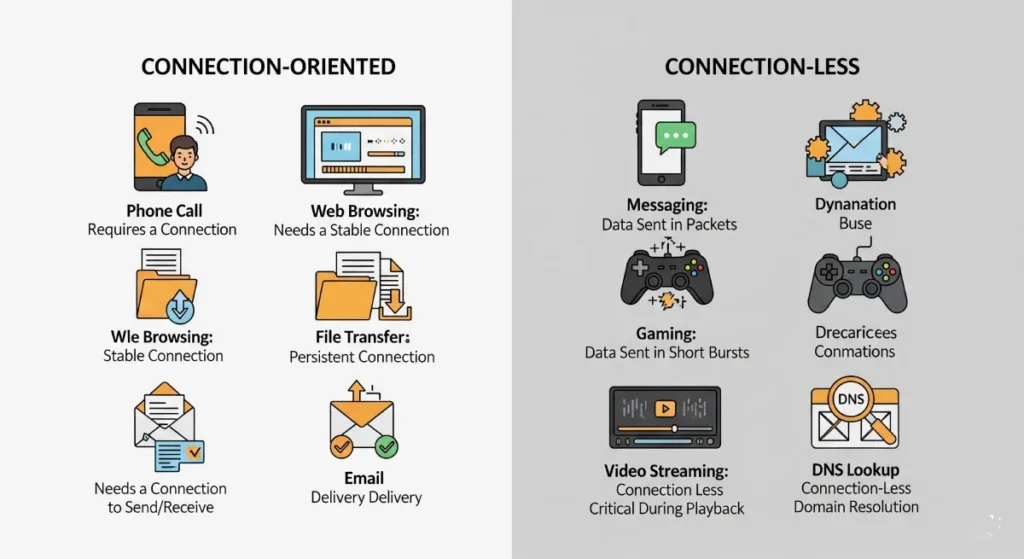
Real-World Examples and Use Cases: Connection-Oriented vs Connection-Less
Understanding connection-oriented vs connection-less becomes easier when you think about everyday situations we all experience.
Connection-Oriented Examples
Making a Phone Call
When you make a phone call, you follow a specific process that mirrors connection-oriented communication:
- You dial the number (connection request)
- The phone rings and someone answers (connection established)
- You confirm you can hear each other (handshake)
- You have your conversation (data transfer)
- You say goodbye and hang up (connection termination)
If the call drops, you know immediately and can reconnect. This guarantees your message gets delivered properly.
Web Browsing (HTTP/HTTPS)
When you visit a website, your browser establishes a TCP connection with the web server. This ensures that all HTML, CSS, and JavaScript files are downloaded completely and in the correct order, providing a seamless browsing experience.
File Transfer Protocol (FTP)
FTP uses TCP to ensure that files are transferred without corruption. Whether you’re uploading a document or downloading software, TCP guarantees that every byte reaches its destination intact.
Email Communication
Email protocols like SMTP, POP3, and IMAP rely on TCP to ensure that your messages are delivered completely and in the correct format, preventing corruption or loss of important communications.
Connection-Less Examples
Sending Text Messages
Text messaging works like connection-less communication:
- You write your message and send it immediately
- No need to establish a connection first
- You don’t know if it arrived unless they reply
- Messages might arrive out of order
- Some messages might get lost completely
This is faster but less reliable than a phone call.
Online Gaming
Multiplayer games use UDP to send player position updates and actions. The occasional lost packet is acceptable since newer data quickly replaces it, and low latency is crucial for responsive gameplay.
Video Streaming
Live streaming platforms use UDP for real-time video delivery. If a few packets are lost, the stream continues rather than pausing to retransmit, maintaining the live experience.
DNS Queries
Domain Name System queries use UDP for quick hostname resolution. The small size of DNS requests makes the overhead of TCP connection establishment unnecessary.
Performance Analysis
Latency Comparison
Connection-less protocols typically offer lower latency since they don’t require connection establishment. However, connection-oriented protocols may have predictable latency once the connection is established.
Throughput Considerations
For large data transfers, connection-oriented protocols often achieve higher throughput due to their congestion control mechanisms. Connection-less protocols may suffer from packet loss under high load conditions.
Resource Usage
Connection-oriented protocols consume more memory and CPU resources due to state maintenance, while connection-less protocols are more lightweight and scale better for simple applications.
Network Efficiency
| Metric | Connection-Oriented | Connection-Less |
|---|---|---|
| Header Overhead | 20-60 bytes (TCP) | 8 bytes (UDP) |
| Connection Setup Time | 3-way handshake required | None |
| Memory Usage | Higher (connection state) | Lower (stateless) |
| CPU Usage | Higher (error control) | Lower (minimal processing) |
How to Choose: Connection-Oriented vs Connection-Less
Deciding between connection-oriented vs connection-less depends on your specific application requirements. Here’s a practical decision framework.
Choose Connection-Oriented When:
- Data accuracy is critical: Financial transactions, medical records, legal documents
- Large data transfers: File downloads, database synchronization, software updates
- Network is unreliable: Mobile networks, satellite connections, congested networks
- Order matters: Sequential data processing, step-by-step instructions
- Guaranteed delivery needed: Email, messaging systems, data backups
Choose Connection-Less When:
- Speed is priority: Real-time gaming, live streaming, voice calls
- Small, frequent updates: Sensor data, status updates, location tracking
- Occasional loss is acceptable: Video frames, audio packets, monitoring data
- Network resources are limited: IoT devices, embedded systems
- Broadcasting needed: Live events, news feeds, weather updates
Mixed Approach Examples
Many modern applications use both methods strategically:
- Video conferencing: Connection-less for video/audio, connection-oriented for chat
- Online gaming: Connection-less for player movements, connection-oriented for game state
- Streaming platforms: Connection-less for content delivery, connection-oriented for user accounts
Practical Implementation
Connection-Oriented: A practical example of a connection-oriented service is the Transmission Control Protocol (TCP). A TCP connection is established, data is transferred in a reliable and ordered manner, and the connection is terminated after the data exchange.
Connection-Less: An example of a connection-less service is the User Datagram Protocol (UDP). UDP sends data packets without establishing a connection, making it faster but less reliable compared to TCP.
Step-by-Step Implementation Guide
Connection-Oriented (TCP):
- Create a TCP socket using a server and client
- Establish a connection between the server and client using the socket
- Send data from the client to the server and vice versa
- Close the connection after the data exchange is complete
Connection-Less (UDP):
- Create a UDP socket using a server and client
- Send data packets from the client to the server without establishing a connection
- Handle packet loss and out-of-order arrival at the application level if needed
Working Code Snippets
Connection-Oriented (Python):
import socket
# Server
server_socket = socket.socket(socket.AF_INET, socket.SOCK_STREAM)
server_socket.bind(('localhost', 9999))
server_socket.listen()
# Client
client_socket = socket.socket(socket.AF_INET, socket.SOCK_STREAM)
client_socket.connect(('localhost', 9999))
Connection-Less (Python):
import socket
# Server
server_socket = socket.socket(socket.AF_INET, socket.SOCK_DGRAM)
server_socket.bind(('localhost', 9999))
# Client
client_socket = socket.socket(socket.AF_INET, socket.SOCK_DGRAM)
client_socket.sendto(b'Hello, UDP!', ('localhost', 9999))
Best Practices and Optimization Tips
- Connection-oriented services are best suited for applications requiring reliable and ordered data delivery
- Connection-less services are more efficient for real-time applications or scenarios where occasional data loss is acceptable
- Use connection-oriented protocols for critical data exchanges and connection-less protocols for streaming or broadcasting data
- Connection pooling can reduce TCP overhead by reusing established connections
- Buffer management is crucial for both protocols to handle data efficiently
Common Pitfalls and Solutions
Pitfall: Overhead associated with connection-oriented protocols can impact performance.
Solution: Optimize TCP connections by reusing sockets and minimizing unnecessary data transfers.
Pitfall: Data loss in connection-less protocols can lead to incomplete transmissions.
Solution: Implement mechanisms like checksums or application-level acknowledgments to ensure data integrity in UDP transmissions.
Industry Applications: Connection-Oriented vs Connection-Less
Different industries choose between connection-oriented vs connection-less based on their specific needs and priorities.
Financial Services (Connection-Oriented Focused)
Banking and financial institutions prioritize reliability over speed:
- Transaction processing: Every payment must be confirmed and recorded
- Account management: Balance updates must be accurate and ordered
- Regulatory compliance: Audit trails require guaranteed message delivery
- Risk management: Trading systems need reliable data for decision-making
Entertainment Industry (Connection-Less Focused)
Gaming and streaming companies prioritize speed and user experience:
- Live streaming: Smooth video playback is more important than perfect quality
- Online gaming: Player actions need immediate response
- Sports broadcasting: Real-time updates matter more than occasional data loss
- Music streaming: Continuous playback with minimal buffering
Healthcare (Mixed Approach)
Healthcare applications balance reliability and speed based on criticality:
- Patient records: Connection-oriented for accuracy and completeness
- Real-time monitoring: Connection-less for continuous vital signs
- Emergency systems: Connection-less for immediate alerts
- Medical imaging: Connection-oriented for complete, accurate scans
Manufacturing (IoT and Automation)
Smart factories use both approaches strategically:
- Sensor networks: Connection-less for frequent status updates
- Control systems: Connection-oriented for critical commands
- Quality control: Connection-oriented for inspection data
- Predictive maintenance: Connection-less for continuous monitoring
Security Considerations
Connection-Oriented Security
TCP connections provide some inherent security benefits through sequence numbers and connection state validation. However, they’re also vulnerable to:
- SYN flood attacks – Overwhelming servers with connection requests
- Session hijacking – Intercepting established connections
- Connection exhaustion – Consuming server resources
Connection-Less Security
UDP’s stateless nature makes it both more vulnerable and more resilient to certain attacks:
- Vulnerabilities: No connection validation, easier to spoof
- Advantages: No connection state to hijack, faster recovery from attacks
Security Best Practices
- Use encryption (TLS/SSL) for sensitive data regardless of protocol
- Implement proper authentication and authorization
- Use firewalls and intrusion detection systems
- Monitor network traffic for suspicious patterns
- Apply rate limiting to prevent abuse
Troubleshooting Common Issues
Connection-Oriented Issues
Connection Timeouts
Problem: Applications fail to establish connections within the specified timeout period.
Solutions:
- Increase timeout values in application settings
- Check network connectivity and firewall rules
- Verify server availability and resource limits
Slow Data Transfer
Problem: TCP connections experience poor performance.
Solutions:
- Optimize TCP window size settings
- Check for network congestion
- Implement connection pooling
- Monitor for packet loss and retransmissions
Connection-Less Issues
Packet Loss
Problem: UDP packets are lost during transmission.
Solutions:
- Implement application-level acknowledgments
- Use smaller packet sizes
- Add redundancy for critical data
- Monitor network conditions
Out-of-Order Delivery
Problem: UDP packets arrive in incorrect sequence.
Solutions:
- Add sequence numbers to packets
- Implement buffering and reordering logic
- Use timestamps for time-sensitive data
General Troubleshooting Tools
- Wireshark – Network protocol analyzer
- tcpdump – Command-line packet analyzer
- netstat – Network connection monitoring
- ping/traceroute – Network connectivity testing
- iperf – Network performance testing
Frequently Asked Questions: Connection-Oriented vs Connection-Less
What is the difference between connection-oriented and connection-less services?
In a connection-oriented service, the system establishes a dedicated communication path between two devices before transferring any data, ensuring orderly and error-free delivery. In contrast, a connection-less service sends each data packet independently without establishing a prior connection, providing no guarantees on delivery or order.
When should I choose a connection-oriented service?
You should choose a connection-oriented service when data integrity and reliability are crucial, such as when transferring important files, conducting financial transactions, or sending email communications. Connection-oriented services guarantee data delivery and ensure that packets arrive in the correct order.
When is a connection-less service more suitable?
A connection-less service is more suitable when real-time communication is required or when the overhead of establishing and maintaining connections is undesirable. Applications like video conferencing, online gaming, or live streaming often favor connection-less services to reduce latency and improve responsiveness.
Can a single system support both connection-oriented and connection-less services simultaneously?
Yes, a single system can support both connection-oriented and connection-less services simultaneously. This flexibility allows applications to choose the appropriate communication mode based on their specific requirements, optimizing performance and efficiency.
Are connection-oriented services more secure than connection-less services?
While connection-oriented services offer inherent security benefits due to the established connection and data integrity checks, connection-less services can also be secured through encryption and other mechanisms. The level of security ultimately depends on the implementation of each service and additional security measures applied.
Which protocol is better for mobile applications?
The choice depends on the application’s requirements. For applications requiring reliability (like messaging apps), TCP is preferred. For real-time applications (like video calls), UDP is often chosen due to its lower latency and reduced battery consumption.
How do I decide between TCP and UDP for my application?
Consider these factors: data integrity requirements, acceptable latency levels, network conditions, resource constraints, and user experience expectations. Use TCP for critical data and UDP for real-time or high-volume applications where occasional data loss is acceptable.
Can I switch between connection-oriented and connection-less during runtime?
While you cannot switch the same socket between TCP and UDP, applications can use both protocols simultaneously for different types of data. Some applications use TCP for control messages and UDP for data transmission.
Conclusion
In conclusion, the choice between connection-oriented and connection-less services depends on the specific requirements and priorities of the system or application in question. Connection-oriented services establish a dedicated connection before data transfer, ensuring reliability and order, while connection-less services offer speed and efficiency with minimal overhead.
Key differences lie in the establishment of connections, reliability, sequencing, and overhead costs. Connection-oriented services are preferable for applications that prioritize data integrity and order, such as file transfer, web browsing, and email services. On the other hand, connection-less services are more suitable for real-time communication, gaming, or situations where speed is paramount.
When making your decision, evaluate factors such as the nature of the data, required latency, network conditions, scalability needs, and security requirements. Choose connection-oriented services for mission-critical applications that require data integrity and guaranteed delivery. Opt for connection-less services for time-sensitive applications that prioritize speed and can tolerate occasional data loss.
Modern applications often benefit from a hybrid approach, using both protocols strategically based on the specific needs of different components. Understanding the strengths and limitations of each approach will help you make informed decisions that optimize both performance and reliability for your specific use case.
Ultimately, the best choice depends on striking a balance between reliability, speed, and overhead based on the specific requirements of your system. Assessing these decision-making criteria will help you determine whether a connection-oriented or connection-less service works best for your unique needs.
